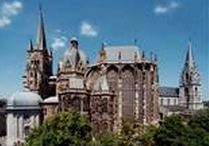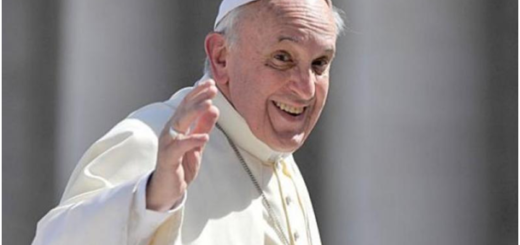God’s migrant workers: Germany recruits Catholic priests from India

Story By: Matters India.
Father Boniface was used to packed churches when he said Mass in southern India. But he delivered his first sermon in Germany to a congregation of just four. There are currently around 1,800 foreign clerics helping to make good the lack of Catholic priests in Germany.
Trier, Germany (dpa) – Boniface Packiam is a busy man in the service of the Lord, saying Mass five times a week in the Roman Catholic parish centred on Trier in the far west of Germany.
The 42-year-old priest from southern India came out seven years ago to help fill the gaps in the pastoral care provided by the church, reported dpa-international.
Apart from saying Mass, Packiam officiates at baptisms and funerals and ministers to the faithful.
“Trier has now become my second home,” he says. He is one of around 1,800 foreign clerics currently making a major contribution to the Catholic Church in Germany.
Given the decline in home-grown priests, many Masses would no longer be said without this missionary effort.
Priests from India, Poland and Africa have long been assisting in Catholic parishes in Germany. The diocese of Trier, where there are already around two dozen foreign priests, is taking on more.
A new cooperation project with the Institute for Pastoral Management in Bangalore in southern India is to provide five Indian priests a year for the diocese.
To prepare them for their mission in Germany, the priests undergo a 10-month course in India, including three language courses, according to Markus Nicolay, an advisor to priests in Trier.
They also learn about German ecclesiastical history, liturgy and pastoral care. The first priests to pass the course are expected in Trier at the end of April.
Before they go out into the parishes, the priests undergo a six-month language course in Germany, and another round of lectures at the Trier seminary helps them find their way through the new cultural environment.
Around 50 Indian priests are expected over the years ahead. “I believe that if we do our best, this project will be a success,” Nicolay says.
“Then parishioners will accept the work of these priests from abroad and hopefully see them as enriching.”
The Indian priests will have the services of a language assistant to help with their sermons. The intention is that they will stay in Germany for a maximum of 10 years, so that they will be able to reintegrate into life at home, Nicolay says.
“Knowing German is the alpha and the omega,” says Packiam, who is generally known as Father Boni. “How else would you be able to approach people?”
Packiam learnt his German at Trier University. Alongside his parish duties and pastoral work in a hospital, he has also written a doctoral thesis on theology.
In the diocese of Muenster there are already some 150 priests from around the world in action, many of them from India, according to diocese spokesman Stephan Kronenburg. The number is rising, with a total of 200 planned.
This is a “comparatively large number,” he says, adding that previous experience with the priests from abroad has been mixed. Some integrate rapidly, whereas others struggle to find their feet.
The language courses are key, Kronenburg says. But there are always other cultural barriers. “For us it is important for example that work with the laity and particularly with women goes well,” he says.
“In many cases the traditions in the priest’s home country are different.”
Kronenburg praises these priests from the global church for their contribution to the liturgy and to pastoral care in the parishes.
“Luckily there are more newly ordained priests than the local churches can employ in other regions of the world,” he says.
Father Boniface, who intends to return to India in 2016, has integrated well into the Trier diocese, the oldest bishopric north of the Alps.
“I’ve had no problems, not even with the climate or the food,” he says.
But he did have to get used to the empty churches. At home in Kumbakonam in Tamil Nadu state, Mass is said three or four a day in one church, with 200 to 300 attending.
“At my first service in Trier there were four people present,” Packiam says.
















